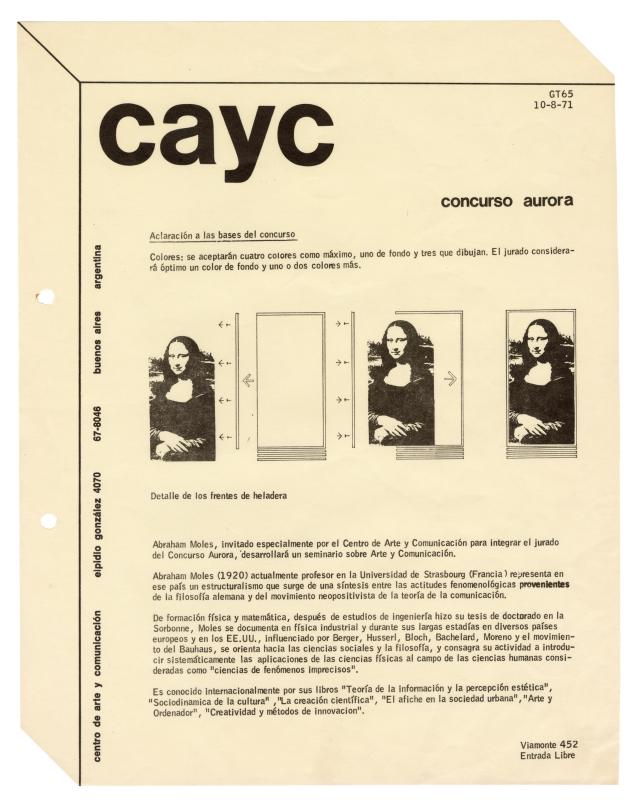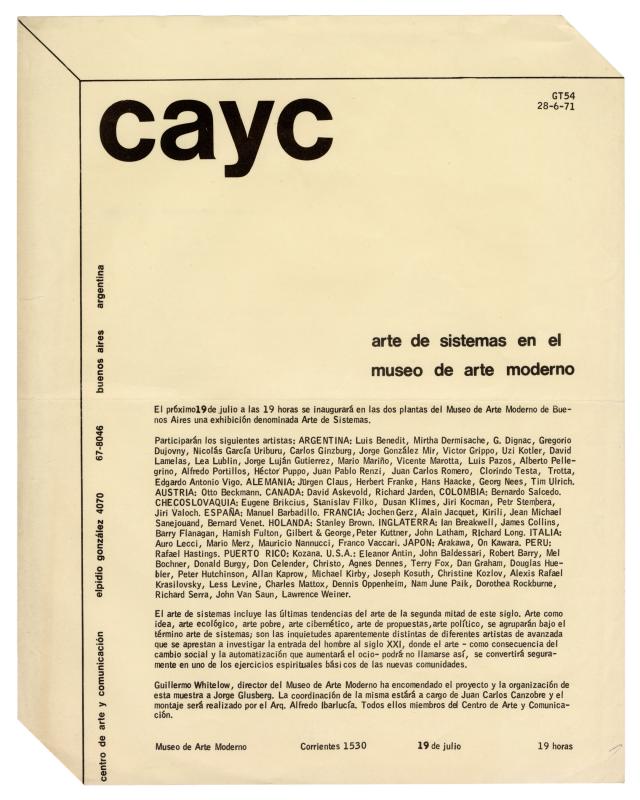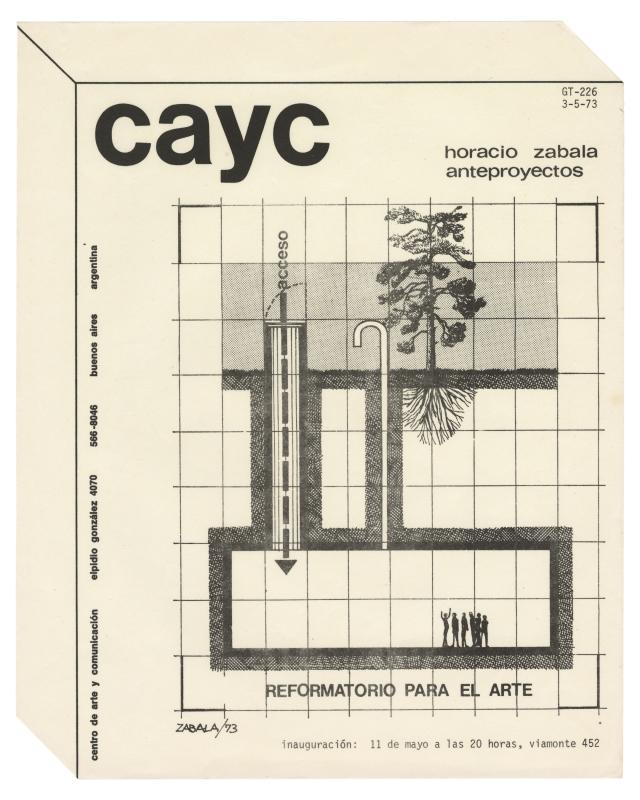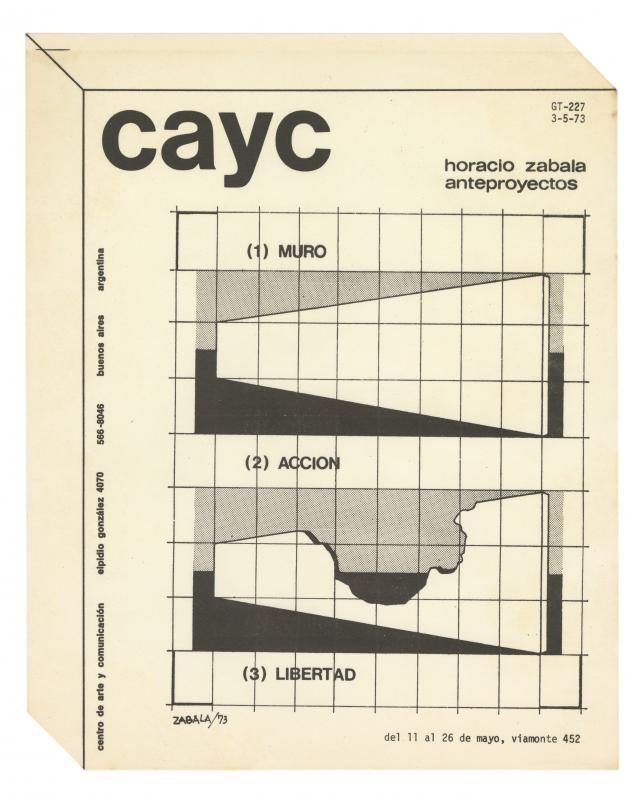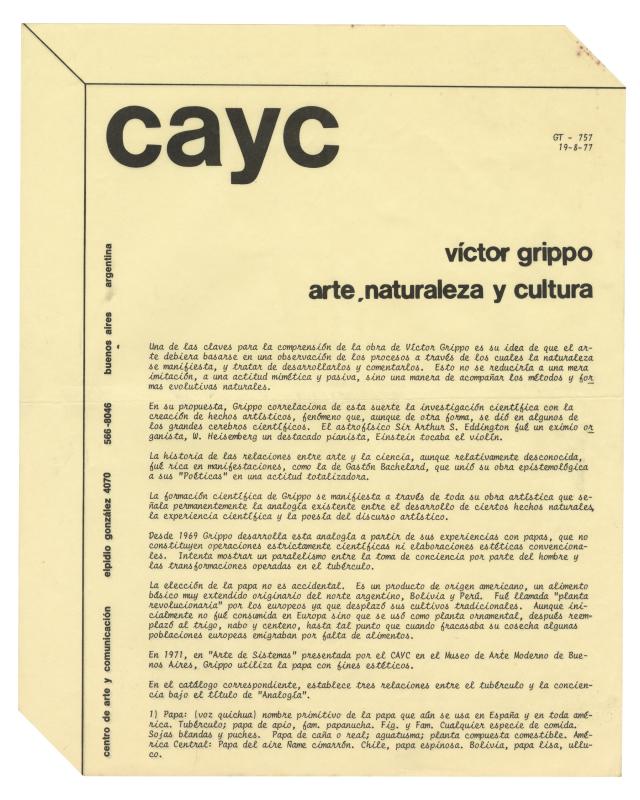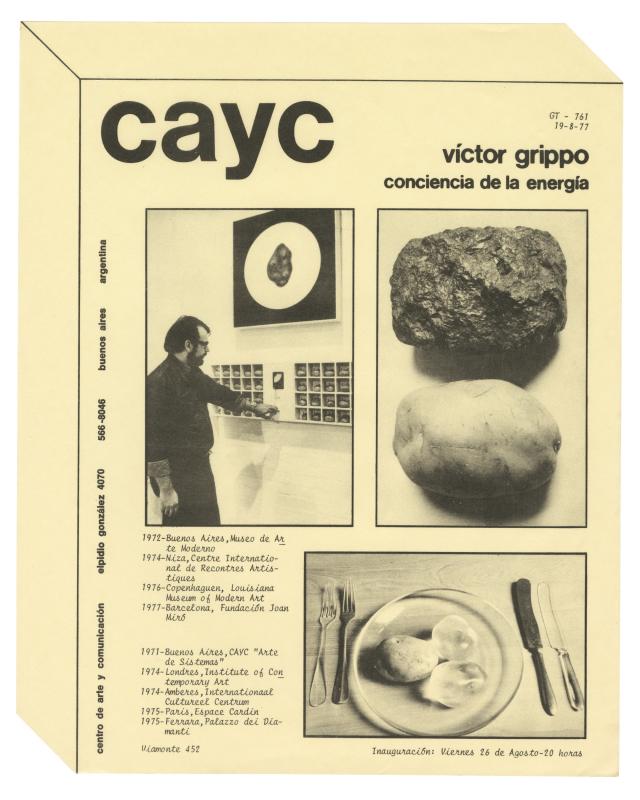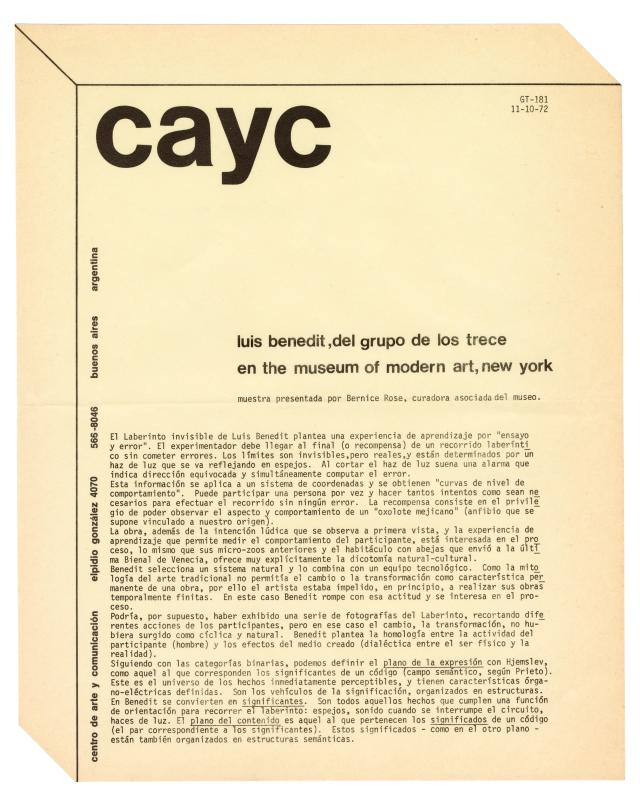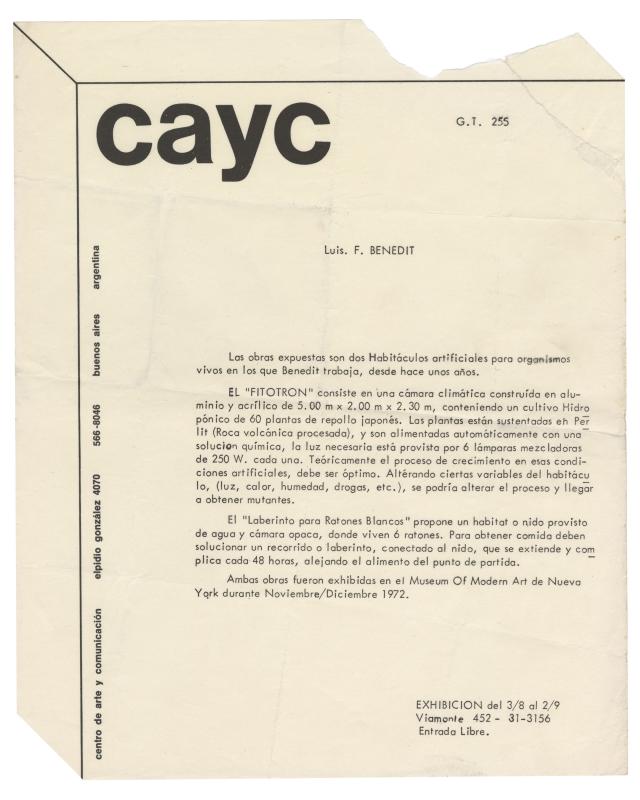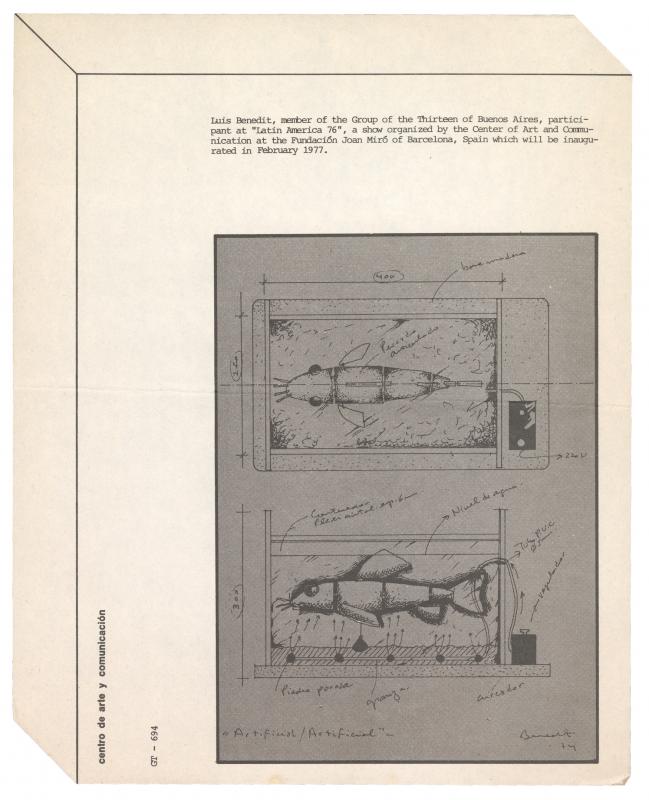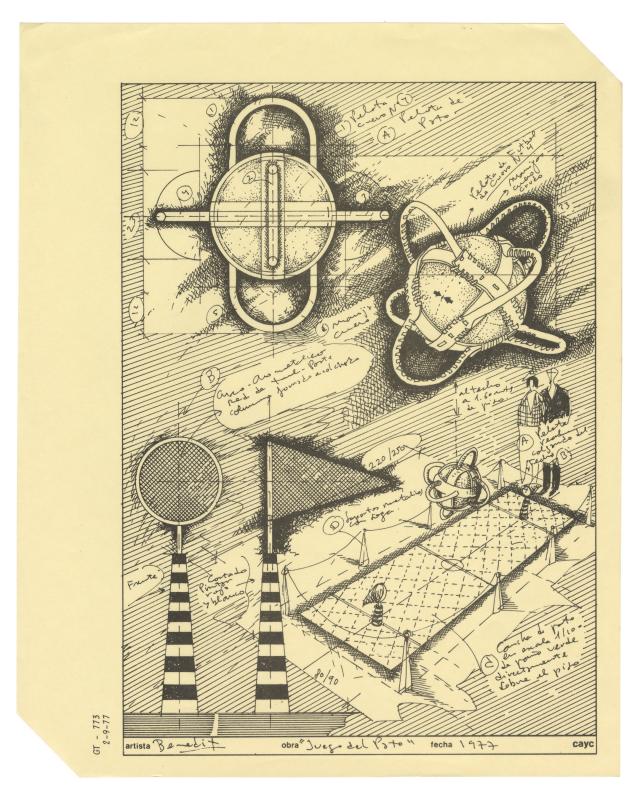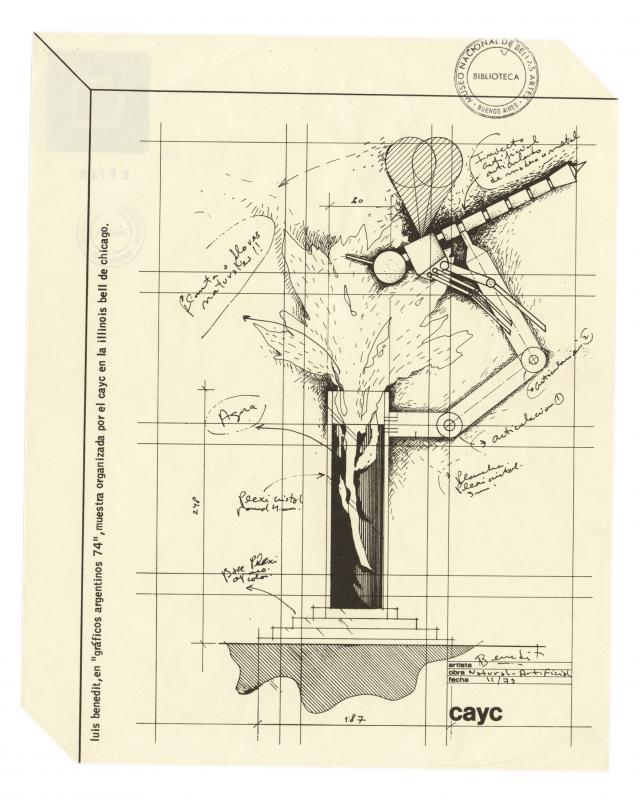Ever since it was founded, the CAYC (Centro de Arte y Comunicación), helmed by the cultural promoter, artist, and businessman Jorge Glusberg, was intended as an interdisciplinary space where an experimental art movement could flourish. The establishment of collaborative networks connecting local and international artists and critics played an important role in this process. In addition to the exhibitions, a program of different activities provided viewers with a greater chance of seeing the latest innovations in art and scientific thought. According to Glusberg, the coordination between theoretical thinking and artistic practice was a key factor in the achievement of social change.
This newsletter reports on Abraham Moles (1920–1992) and explains how his theoretical thinking evolved. With a background in physics, he was one of the first to apply the concepts of the natural sciences to the social field, thus becoming an early advocate of the structuralist theory of communication. He later expanded it to include the analysis of art production. Moles then became interested in the application of cybernetics to human behavior at a societal level, a concept that was of vital importance to the CAYC’s activities in the early 1970s.
This article was published to promote Arte y comunicación, the seminar presented by the French theorist at the CAYC (GT-82; doc. no. 1478694) in Buenos Aires. During his visit, he also served as a member of the jury for the Concurso Aurora (GT-65; doc. no. doc. no. 1478077). Moles was a regular referent during the CAYC’s and the Grupo de los Trece’s first period, especially regarding the idea of “arte de sistemas.” His theoretical approach provided local artists with a scientific basis for their practical works; it also defined art production, as mentioned above.
A few months after the opening of the exhibition Arte de Sistemas I at the Museo de Arte Moderno de Buenos Aires (MAMBA, GT-54; doc. no. 1476292), at which Glusberg sought to associate local production with international works—all of which were related to various versions of Conceptual art—it became obvious that artists needed a theoretical framework that would stimulate discussion and creation.
Moles’ proposals, as summarized in this article, are reflected in later works by some of the artists in the Grupo de los Trece, including the idea of “interstitial freedom” in Horacio Zabala’s draft plans for prisons (GT-226- doc. no. 1476432, GT-227; doc. no. 1476433); and the method based on analogies as an intellectual system with which to grasp reality in works by Víctor Grippo (GT-695; doc. no. 1477339, GT-699; doc. no. 1477343, GT-757-758-759; doc. no. 1477397, GT-761; doc. no. 1477419) and Luis (Fernando) Benedit (GT-181; doc. no. 1476353, GT-255; doc. no. 1476447, GT-694; doc. no. 1477338">1477338, GT-745; doc. no. 1477395, GT-746; doc. no. 1477338">1477338, GT-773; doc. no. 1477436, GT-800; doc. no. 1477463 y S/N; doc. no. 1476928).


